It’s the middle of turtle season in Dominica, and we are pleased to share this has been one of our most successful seasons yet!
Leatherbacks
As of mid-July 2016, we’ve welcomed 166 leatherback sea turtles to our black sand beach — a new record for Rosalie Bay! Previously, the highest record was from 2013, when 109 leatherbacks visited our beach. Turtles do not always dig a nest when they crawl ashore. This is referred to as a “false crawl.”

Hawksbills
At the end of June, we eagerly greeted the season’s first hawksbill sea turtle to nest on our beach. While we typically relocate our leatherbacks’ nests to safety, hawksbill turtles tend to nest further up on the beach and rarely need their nests to be moved. It takes about 55 days for their eggs to emerge from the nest.

Hatchlings
With 81 confirmed nests and 14 suspected nests, a record number of eggs fill the hatchery. So far, this has resulted in 33 excavations with approximately 30 turtles in each nest — about 1,000 baby turtles! The first hatchlings were released in the beginning of June and frequent turtle activity continues!
 Photo: Harrison Bailey
Photo: Harrison Bailey
A Successful Season
We largely attribute this year’s success to our volunteers and dedicated turtle experts. We’ve been quite attentive with our beach clean-up and appreciate our guests, locals or student visitors who have helped to maintain our clean beach. Volunteers remove driftwood, litter and seaweed from our beach, offering a clear spot and safe environment for our turtles to nest.
This year, Nature Enhancement Team (NET) Director Simon George was determined to be on the beach full-time to monitor turtles and their safety. He recorded every turtle that nested, ensured eggs were safely placed in the hatchery and made dreams come true for guests around the world as they witnessed one of the nature’s most mesmerizing sights.

At Rosalie Bay, we are fortunate to have the opportunity to help highly endangered sea turtles and appreciate our guests’ passion. We wish our sea turtles another 200 million years on Earth!
